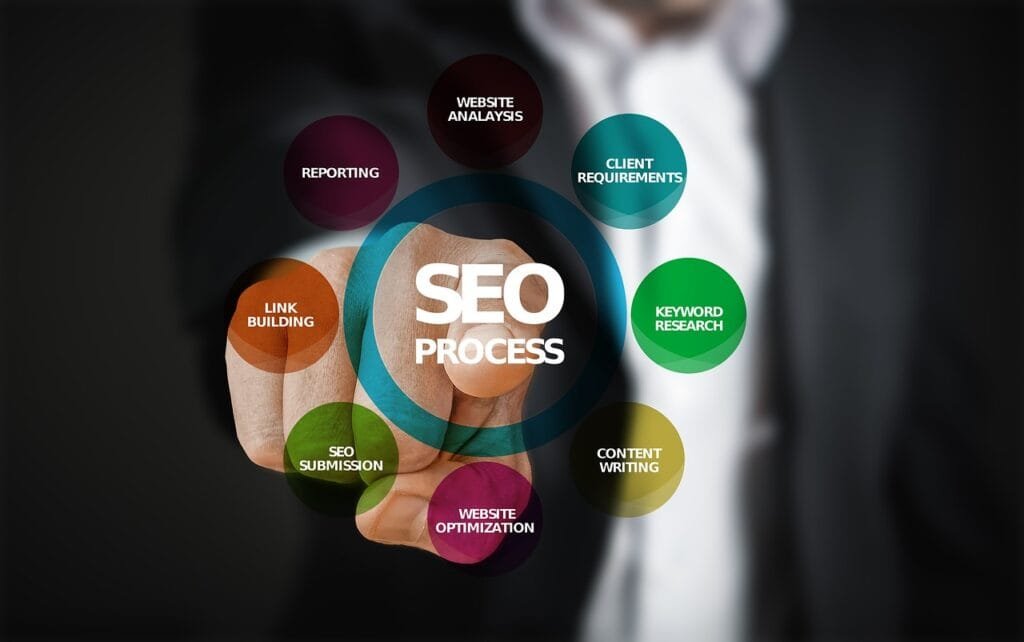This Article has been revised, edited and added to, by Poulomi Chakraborty.
- The Pillars of CRO: Understanding the Basics
- Streamlined Booking Process: Less Is More
- Mobile Optimization: The Power of Pocket Bookings
- Trust Signals: Building Confidence in Potential Bookers
- Personalization: Tailoring the Booking Experience
- A/B Testing: The Bedrock of Effective CRO
- Engaging Visuals: The Silent Persuaders
- Wrapping Up: The Continuous Journey of CRO
In the digital landscape of the travel and hospitality industry, website traffic is only one piece of the puzzle. Driving visitors to your platform is commendable, but if they’re not converting into bookings, revenue opportunities are being lost. Conversion Rate Optimization (CRO) bridges this gap, focusing on turning passive visitors into active customers. With fierce competition and shifting user behaviors, mastering CRO techniques is no longer optional for businesses aiming for robust booking rates. Dive in as we unravel actionable CRO strategies tailored to optimize booking rates, fostering growth and enhancing user satisfaction.
The Pillars of CRO: Understanding the Basics

Conversion Rate Optimization (CRO) is an essential strategy for any startup looking to enhance their booking rates. At its core, CRO is about making your website or app more effective at turning visitors into customers. To dive deeper into the fundamentals, let’s explore the strategic pillars that form the foundation of effective CRO practices.
The User Experience (UX) Imperative
Embracing User-Centric Design
Creating a seamless user experience is paramount. This means designing your digital touchpoints with the user’s needs and behaviors in mind. A user-centric approach ensures that visitors can navigate your platform effortlessly, find the information they need, and complete actions without confusion or frustration. Consider employing heat maps and user session recordings to uncover usability issues and opportunities for improvement.
Speed and Performance Optimization
In today’s digital landscape, speed is non-negotiable. A slow-loading page can significantly increase bounce rates and decrease conversion opportunities. Focus on optimizing images, leveraging browser caching, and minimizing HTTP requests. Regularly testing your site’s speed and performance across different devices and browsers is crucial to maintaining an edge.
Building Trust and Credibility
Showcasing Social Proof
Social proof, such as testimonials, user reviews, and case studies, can powerfully influence booking decisions. By showcasing the experiences of previous customers, you’re providing evidence of your value and reliability. Make sure these elements are prominently displayed and updated regularly to reflect the current satisfaction level of your customers.
Ensuring Transparency and Security
Transparency about your pricing, policies, and what your service entails builds trust with potential customers. Additionally, demonstrating that your site is secure and that user data is protected reassures visitors, making them more likely to complete a booking. Implement and highlight security measures such as SSL certificates, and make your privacy policy easily accessible.
Leveraging Analytics and Feedback
Data-Driven Decision Making
Utilize analytics tools to gather data on how users interact with your site. This includes tracking conversions, bounce rates, and other critical metrics. Analyzing this data allows you to identify patterns, understand what’s working, and pinpoint areas for improvement.
Acting on Customer Feedback
Feedback is invaluable for CRO. Regularly solicit feedback through surveys, feedback forms, and direct customer interactions. This direct line to your users’ thoughts and experiences can highlight areas for enhancement that you might not have identified through analytics alone.
Continuous Testing and Optimization
Embracing the Test-and-Learn Approach
CRO is not a one-time project but a continuous process of testing, learning, and optimizing. A/B testing is a crucial tool in this regard, allowing you to compare different versions of a page to see which performs better. Every element, from headlines and CTAs to images and page layouts, can be tested to optimize conversions.
Personalization and Segmentation
Tailoring the user experience to different segments of your audience can significantly improve conversion rates. Use the data you’ve collected to personalize content, offers, and messages based on user behavior, demographics, or location. Personalization makes users feel understood and valued, encouraging them to convert.
Strategic Content Marketing
Educating and Engaging Your Audience
Content is not just about selling but educating and engaging your audience. High-quality, valuable content positions your brand as a thought leader and builds a relationship with potential customers. From blog posts and videos to infographics and eBooks, diverse content types can cater to different preferences, keeping your audience engaged and moving through the conversion funnel.
Optimizing for Search and Visibility
Ensure your content is optimized for search engines to improve visibility and attract more organic traffic. This involves keyword research, on-page SEO practices, and building a backlink profile. Remember, more traffic often translates to more opportunities for conversion.
The pillars of CRO revolve around understanding and optimizing the user journey from start to finish. By focusing on user experience, building trust, leveraging data, continuously testing, and employing strategic content marketing, startups can significantly improve their booking rates. CRO is a dynamic and ongoing process, demanding regular analysis and adjustment, but the rewards in terms of increased conversions and customer satisfaction are well worth the effort.
Streamlined Booking Process: Less Is More

The booking process is the culmination of your efforts in guiding potential customers from interest to action. A streamlined booking process can significantly increase conversion rates by reducing friction and making it as simple as possible for users to complete their bookings. Below, we delve into strategic advice to refine this process, focusing on essential steps and considerations for startup founders.
Prioritizing User Convenience
Crafting a Seamless Journey
The path to booking should be intuitive and straightforward. Every additional step in the process presents an opportunity for the user to abandon their booking. Analyze your current booking process and identify any unnecessary steps or information requests. Simplifying the process might mean integrating smarter forms that auto-fill user information, reducing the number of fields, or even offering options for users to book as guests without creating an account.
Mobile Optimization Is Key
With the increasing prevalence of mobile devices, ensuring that your booking process is optimized for mobile users is non-negotiable. This means large, easy-to-tap buttons, minimalistic design that loads quickly on all devices, and forms that are simple to fill out even on a small screen. The mobile experience often dictates the overall impression of your brand, so prioritize it in your optimization efforts.
Enhancing Clarity and Support
Transparent Communication
From the outset, users should understand exactly what steps they need to take to complete their booking. This includes clear instructions, an indication of the booking process’s length, and real-time feedback if errors are made during form completion. Additionally, transparently displaying prices, including any additional fees or taxes, can prevent surprises that might deter users from finalizing their bookings.
Providing Real-Time Assistance
Incorporate live chat support or an easily accessible FAQ section that addresses common questions and concerns users might have during the booking process. Real-time assistance not only helps resolve issues promptly but also adds a human touch, enhancing the user’s trust and confidence in your service.
Leveraging Technology for Efficiency
Implementing Smart Features
Use technology to your advantage by incorporating features such as calendar integration, which allows users to see available dates and times at a glance, and predictive search, which helps users quickly find the options they’re interested in. Additionally, offering multiple payment options can cater to the preferences of a broader audience, removing another potential barrier to booking.
Automation and Confirmation
Once a booking is completed, automate the confirmation process to immediately send a confirmation email or text message. This reassures customers that their booking has been successfully processed. Consider including details like what to expect next, any preparation required, and how to modify or cancel the booking. This immediate follow-up is crucial for maintaining clarity and trust.
Continuously Gathering and Applying Insights
Utilizing Feedback Loops
Establish mechanisms to gather feedback specifically about the booking process. This can be achieved through post-booking surveys, monitoring social media mentions, or direct outreach. Understanding where users experience friction or confusion provides direct insights into what adjustments need to be made.
Adopting a Data-Driven Approach
Analyze booking process metrics to identify drop-off points, time taken to complete bookings, and user interactions with different elements on the booking page. Tools like Google Analytics and heat mapping software can unveil user behavior patterns, informing your optimization strategies.
Streamlining the booking process by prioritizing user convenience, enhancing clarity and support, leveraging technology for efficiency, and continuously gathering and applying insights can dramatically improve your booking rates.
For startup founders, focusing on making the booking as effortless as possible is not just about increasing conversions—it’s about creating a positive, lasting impression that encourages repeat business and word-of-mouth referrals. Remember, in the context of booking processes, less truly is more.
Mobile Optimization: The Power of Pocket Bookings

In the digital age, mobile devices have become the primary means of internet access for millions of users worldwide. This shift towards mobile has transformed user behavior, making mobile optimization a critical factor for any startup looking to boost their booking rates. Emphasizing the power of pocket bookings involves understanding and implementing strategies that cater specifically to mobile users, ensuring a seamless, efficient, and engaging experience from the palm of their hand.
Emphasizing Speed and Simplicity
Achieving Lightning-Fast Load Times
Mobile users expect quick access to information and services. Optimizing your mobile site’s speed involves compressing images, leveraging caching, and minimizing the use of heavy scripts that can slow down page load times. Utilize tools like Google’s PageSpeed Insights to identify areas for improvement and implement necessary changes to enhance speed.
Simplifying the User Journey
A streamlined user journey is crucial on mobile devices, where screen real estate is limited. This means minimizing the number of steps to book, simplifying navigation menus, and ensuring that calls to action (CTAs) are prominently displayed and easily clickable. The goal is to reduce the effort required to navigate your site and complete a booking.
Designing with Mobile First in Mind
Responsive Design Is Just the Beginning
While responsive design ensures that your site adapts to various screen sizes, a mobile-first approach takes it further by designing specifically for the smallest screens first. This approach prioritizes the essential elements of your site, ensuring they perform flawlessly on mobile devices, then scales up for larger screens.
Intuitive and Accessible Interfaces
User interfaces on mobile should be designed for thumb navigation, making it easy for users to interact with your site using one hand. This involves placing key navigation elements within easy reach and using large, legible fonts and buttons that are easy to tap. Accessibility features, such as voice commands and alternative text for images, also enhance usability for all users.
Enhancing Mobile Functionality
Utilizing Device Capabilities
Mobile devices offer unique functionalities such as GPS, camera, and touch screen, which can be leveraged to enhance the user experience. For instance, enabling location services can simplify the booking process by automatically suggesting locations or services nearby. Integrating these features can provide a more personalized and efficient booking experience.
Seamless Payment Integrations
Mobile wallets and one-click payment options are essential for a frictionless checkout process. Integrating payment solutions like Apple Pay, Google Wallet, or PayPal can drastically reduce the time and effort required to complete a booking, thereby increasing conversion rates. Ensuring that your payment process is secure and straightforward is crucial for retaining trust and encouraging repeat bookings.
Leveraging Mobile Analytics and Feedback
Understanding Mobile User Behavior
Mobile analytics provide insights into how users interact with your mobile site, including tracking conversions, bounce rates, and user engagement. Utilize these analytics to identify patterns and areas for improvement specific to mobile users. This data-driven approach allows for targeted optimizations that can significantly enhance the mobile booking experience.
Actively Seeking and Implementing Feedback
Gathering feedback directly from mobile users can reveal invaluable insights into their experiences and expectations. Encourage feedback through surveys, in-app prompts, or social media engagements. Listening to your users and making iterative improvements based on their feedback demonstrates a commitment to excellence and can lead to higher satisfaction and loyalty.
Optimizing for mobile is not just about making your site accessible on a smartphone. It’s about creating an engaging, efficient, and memorable experience that leverages the unique advantages of mobile devices.
By focusing on speed and simplicity, designing with a mobile-first approach, enhancing mobile functionality, and leveraging analytics and feedback, startups can unlock the full potential of pocket bookings, leading to improved booking rates and customer satisfaction.
Trust Signals: Building Confidence in Potential Bookers

In the digital realm, where face-to-face interactions are rare, establishing trust is crucial for converting visitors into customers. Trust signals are elements on your website or app that reassure potential bookers of your legitimacy, security, and reliability. For startup founders aiming to improve their booking rates, focusing on amplifying these trust signals can be a game-changer. Let’s explore how to effectively build confidence in your potential bookers through strategic trust signal integration.
Leveraging Social Proof
Highlighting Customer Testimonials and Reviews
Genuine testimonials and reviews from past customers are powerful endorsements of your service or product. Displaying these prominently on your site not only provides social proof but also humanizes your offerings. Consider creating a dedicated section for testimonials and a system for collecting and displaying reviews directly related to the user’s search or interest on your site.
Utilizing User-Generated Content
User-generated content, such as photos, videos, or blog posts from your customers, can serve as authentic proof of your service’s value. Featuring this content on your platform or social media channels not only enhances credibility but also encourages more customers to share their experiences, creating a virtuous cycle of trust-building.
Demonstrating Expertise and Authority
Showcasing Certifications and Partnerships
Displaying certifications, accreditations, or partnerships with recognized institutions or brands can significantly boost your credibility. Ensure these symbols are visible and linked to more information about the recognition, which can further reassure users of your expertise and reliability.
Publishing Expert Content
Creating and sharing valuable content that demonstrates your knowledge and expertise in your field establishes your authority and builds trust with your audience. This can include detailed guides, industry analysis, case studies, or insightful blog posts. Regularly updating your content also keeps your site dynamic and engaging, encouraging repeat visits.
Enhancing Security Measures
Highlighting Security Features
Users want assurance that their personal and payment information is secure. Displaying security badges, SSL certificate icons, and encryption notices throughout the booking process can significantly alleviate security concerns. Make sure these symbols are from recognized and trusted entities in cybersecurity.
Transparent Privacy Policies
A clear and accessible privacy policy that outlines how customer data is collected, used, and protected is essential for building trust. Providing an easy-to-understand summary of your privacy policy, along with detailed documentation for those seeking more information, shows that you value and protect user privacy.
Providing Unparalleled Customer Support
Offering Multiple Support Channels
Easy access to customer support through various channels, including live chat, email, phone, and social media, offers reassurance to potential bookers that help is readily available. Highlighting your commitment to support in your booking process can differentiate you from competitors and build trust with your users.
Displaying a Comprehensive FAQ Section
A well-organized FAQ section that addresses common concerns and questions can preemptively solve potential issues and reduce hesitations related to bookings. This resource demonstrates your understanding of customer needs and your readiness to provide information and solutions.
Committing to Transparency
Being Open About Pricing and Policies
Surprises in the form of hidden fees or unclear cancellation policies can damage trust irreparably. Ensure all costs are clearly communicated from the outset, and make your cancellation and refund policies easy to find and understand. Transparency in these areas not only builds trust but also reduces the likelihood of last-minute booking cancellations.
Incorporating these trust-building strategies into your digital presence can significantly enhance your users’ confidence in making a booking. By leveraging social proof, demonstrating expertise, enhancing security, providing unparalleled customer support, and committing to transparency, startups can create a trustworthy and reassuring environment that encourages users to take the final step of booking.

Related: Check out our free SEO suite

Personalization: Tailoring the Booking Experience
In the competitive digital marketplace, personalization is not just a luxury; it’s a necessity for businesses looking to stand out and improve their booking rates. Personalizing the booking experience means understanding and anticipating the needs of your customers to offer them a more relevant, engaging, and seamless journey.
For startups, implementing personalization strategies can significantly enhance user satisfaction and loyalty, ultimately leading to higher conversion rates. Let’s dive into how startups can craft a personalized booking experience that resonates with their audience.
Understanding Your Audience
Segmenting Your User Base
Start by segmenting your users based on their behaviors, preferences, and past interactions with your site. This could include factors like geographical location, browsing history, booking history, and personal preferences. Segmentation allows you to tailor the booking experience to match the specific needs and interests of different user groups.
Leveraging Data for Insightful User Profiles
Collect and analyze data to build detailed user profiles. This involves gathering information through user interactions, feedback, social media activity, and other touchpoints. These profiles serve as the foundation for personalizing the booking journey, enabling you to understand what motivates your users and how best to cater to their needs.
Customizing the Booking Journey
Personalized Content and Recommendations
Use the insights gained from user profiles and segmentation to deliver personalized content and recommendations. This could be in the form of tailored email marketing campaigns, customized landing pages, or personalized suggestions for bookings. For example, if a user frequently books spa retreats, showing them promotions or new offerings in this category can significantly increase the likelihood of a booking.
Dynamic Pricing and Offers
Implement dynamic pricing models and personalized offers based on user behavior and preferences. Special deals, loyalty rewards, and exclusive packages for returning customers can make users feel valued and more inclined to book. Ensure that these offers are relevant and timely, based on the user’s interaction history with your platform.
Enhancing User Engagement

Interactive Elements and Customizable Options
Incorporate interactive elements and customizable options into your booking process. Allowing users to tailor their experience or package not only enhances engagement but also gives them a sense of control and ownership over their booking. Features like interactive calendars, preference filters, and build-your-own package options can significantly enrich the user experience.
Real-Time Personalized Communication
Engage with users in real-time through personalized communication channels. Utilize chatbots that offer assistance based on the user’s browsing behavior or send personalized alerts and reminders for upcoming bookings or special dates. Real-time engagement shows users that you are attentive to their needs, fostering a deeper connection.
Building Long-Term Relationships
Feedback Loops and Continuous Improvement
Create feedback loops that allow users to share their experiences and preferences. Use this feedback to continuously refine and personalize the booking experience. Showing users that their input has led to tangible improvements builds trust and encourages loyalty.
Predictive Personalization
Invest in predictive analytics to anticipate user needs and preferences before they even express them. By analyzing data trends and user behavior patterns, you can offer personalized recommendations and services that meet users’ needs in advance, creating a highly intuitive and proactive booking experience.
Personalization is a powerful strategy for startups looking to improve their booking rates. By understanding your audience, customizing the booking journey, enhancing user engagement, and building long-term relationships, you can create a personalized experience that not only meets but exceeds user expectations.
Remember, the goal of personalization is to make every user feel like your service is tailored specifically for them, transforming the booking process into a seamless, engaging, and highly satisfying journey.
A/B Testing: The Bedrock of Effective CRO
A/B testing stands as a cornerstone methodology for Conversion Rate Optimization (CRO), providing invaluable insights that drive data-backed decisions. This systematic process of comparing two versions of a web page or app feature against each other to determine which performs better in terms of converting visitors is critical for startups aiming to optimize their booking rates. Here, we delve into advanced strategies and considerations to enhance the effectiveness of A/B testing within your CRO efforts.
Developing a Strategic Testing Framework
Identifying Key Conversion Paths
Before diving into A/B testing, it’s crucial to map out the key conversion paths your users take. Understanding these journeys allows you to identify critical touchpoints and elements that significantly impact user decisions. This could include call-to-action (CTA) buttons, landing page layouts, or checkout process steps. Prioritizing these elements for testing ensures you’re focusing on areas with the highest potential impact on conversions.
Formulating Hypotheses Based on User Insights
Each test should begin with a hypothesis that predicts how a particular change will influence user behavior. These hypotheses should be grounded in user insights gained from analytics, feedback, and user behavior studies. By basing your tests on solid hypotheses, you enhance the strategic relevance of your testing efforts, ensuring they’re aligned with user needs and preferences.
Implementing and Managing A/B Tests
Ensuring Statistical Significance
For A/B testing results to be reliable, they must achieve statistical significance. This means that the observed differences in conversion rates between the two versions are likely not due to random chance. Utilizing A/B testing tools that automatically calculate statistical significance can help you determine when a test has run long enough to provide trustworthy data.
Testing One Variable at a Time
While it might be tempting to make multiple changes at once, testing single variables ensures clear understanding of what impacts user behavior. For instance, if testing a landing page, you might start with variations of the headline before moving on to test different images or CTA placements. This methodical approach allows for precise insights into what influences conversions.
Analyzing Results and Applying Learnings
Deep Diving into the Data
Beyond looking at which version won, delve into the data to understand why it performed better. Analyze user behavior patterns, such as time spent on page or interactions with specific elements, to gather deeper insights. This can reveal not just the effectiveness of the changes but also user preferences and behavior nuances.
Iterative Testing for Continuous Improvement
A/B testing is not a one-and-done process but a cycle of continuous improvement. After implementing the winning changes, consider what other elements could be optimized. Iterative testing allows for gradual enhancements, steadily increasing conversion rates over time. Additionally, regularly revisit and retest critical elements to ensure they remain optimized as user behaviors and preferences evolve.
Cultivating a Culture of Experimentation
Encouraging Teamwide Engagement
Foster a culture where experimentation is valued and encouraged across all teams. This involves sharing testing plans, results, and learnings widely within the organization. Encouraging input from different departments can bring diverse perspectives to the testing process, enriching the hypothesis generation and interpretation of results.
Learning from Every Test
Not every test will result in a clear winner, but there is value in every outcome. Failures and inconclusive results are opportunities to gain insights into user behavior and refine future tests. Emphasizing the learning process rather than just the wins cultivates a more resilient and innovative approach to CRO.
A/B testing is a fundamental tool in the CRO toolkit, providing the empirical evidence needed to make informed optimization decisions. By developing a strategic testing framework, implementing and managing tests effectively, analyzing results deeply, and fostering a culture of experimentation, startups can significantly enhance their booking rates and overall digital performance. This meticulous and informed approach to A/B testing ensures that every change is a step towards a more optimized, user-friendly, and high-converting experience.
Engaging Visuals: The Silent Persuaders

In the landscape of digital marketing, visuals not only catch the eye but also play a pivotal role in influencing user decisions and enhancing conversion rates. For startups, leveraging the power of engaging visuals can be a game-changer, transforming passive browsers into active bookers. This section delves into strategic advice on harnessing the persuasive power of visuals to elevate your booking rates.
Crafting a Visual Storytelling Strategy
Emphasizing Brand Identity Through Visuals
Your visuals should do more than just look good; they should communicate your brand’s identity and values. Use a consistent color scheme, typography, and imagery style that reflects your brand’s personality. This consistency helps build brand recognition and trust, making users more comfortable with booking.
Utilizing High-Quality, Relevant Images
The quality of your images directly reflects on your brand’s perceived quality. Use high-resolution images that are directly relevant to the user’s search and interest. Authentic photos of your offerings, such as accommodations, activities, or products, can significantly enhance trust and interest. Investing in professional photography or high-quality stock images is worthwhile for the credibility and engagement they bring.
Optimizing Visual Elements for Conversion
Balancing Visuals with Usability
While visuals are crucial, they should not overshadow the usability of your site. Ensure that your website’s design is intuitive, with visual elements that guide users toward making a booking. This includes strategic placement of CTAs, ensuring images are not overly large files that slow down page loading times, and making sure text is legible over backgrounds.
Creating Engaging Video Content
Videos can convey the essence of your offering more dynamically than static images. A short, engaging video that highlights key features, benefits, or testimonials can significantly impact user engagement and conversion rates. Ensure videos are optimized for quick loading and are easily accessible across all devices.
Leveraging Visuals to Enhance User Experience
Implementing Interactive Visuals
Interactive visuals such as 360-degree views, virtual tours, or interactive product demonstrations can provide users with a more immersive experience. These tools help users better understand what they’re booking, reducing uncertainty and increasing the likelihood of conversion.
Personalizing Visual Content
Tailoring visual content to match user preferences or past behavior can make the browsing experience more relevant and engaging. For example, showing images of destinations that the user has previously shown interest in or products related to their browsing history can create a more personalized and persuasive user journey.
Measuring the Impact of Visuals on Conversion Rates
Analyzing Visual Performance
Use analytics tools to track how users interact with visual content on your site. Metrics such as time spent on pages with videos or interactive elements, conversion rates for pages with different image types, and engagement rates for personalized visuals can provide insights into what visuals resonate best with your audience.
A/B Testing Visual Elements
Conduct A/B testing on key visual elements such as hero images, video placements, and CTA button colors or designs. This will help you understand which visuals are most effective in driving bookings and should be an ongoing part of your optimization strategy.
Engaging visuals serve as silent persuaders, significantly influencing user decisions and enhancing the booking experience. By crafting a visual storytelling strategy, optimizing visual elements for conversion, leveraging visuals to enhance user experience, and measuring the impact of visuals on conversion rates, startups can effectively utilize this powerful tool to boost their booking rates. Remember, the goal is to create a visually appealing and coherent user journey that not only captures attention but also persuades and converts browsers into bookers.
Wrapping Up: The Continuous Journey of CRO
Conversion Rate Optimization (CRO) is not a destination but a journey—a continual process of learning, testing, and refining to meet and exceed the evolving expectations of your audience. The digital landscape is always changing, with new trends, technologies, and user behaviors emerging constantly. This dynamic environment demands that startups remain agile, embracing a culture of experimentation and data-driven decision-making.
By prioritizing user experience, engaging visuals, personalization, trust signals, and rigorous A/B testing, businesses can create an optimized booking process that not only attracts but also retains customers. Remember, the insights gained today lay the groundwork for the optimizations of tomorrow. Stay curious, stay adaptable, and let the data guide your path to improved booking rates and sustained business growth. The journey of CRO is an ongoing dialogue with your users, one that shapes the very essence of your digital presence and drives your business forward.
Read Next
- SEO for Adventure Travel Companies
- Cultural Sensitivities and International SEO
- How to Optimize for Different Travel Seasons Globally
- Geo-Targeting and Localization Strategies
- Multilingual SEO for Global Travel Websites





















Comments are closed.